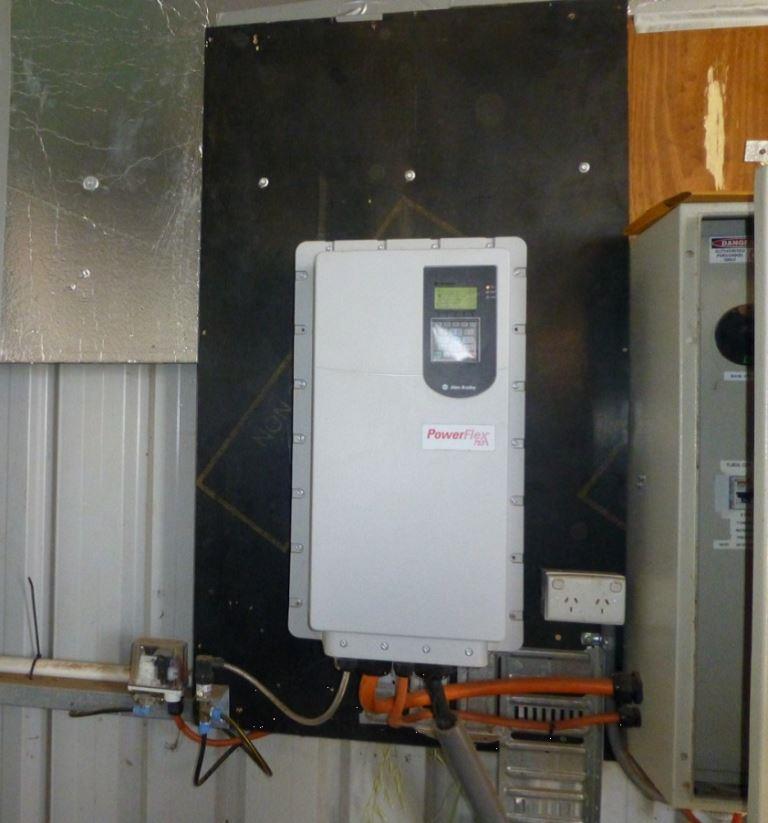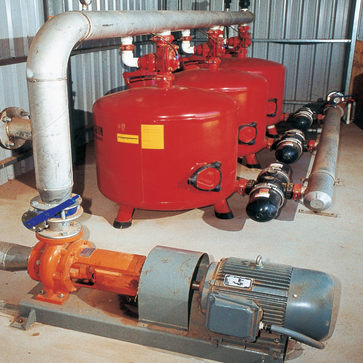A variable speed drive (VSD) is used to adjust a pump’s flow or pressure to the field requirements (actual demand). Adopting VSDs in irrigation was historically for operational reasons such as providing constant pressure outputs, ‘soft starts’, or reducing pump wear. More recently, as energy prices continue to rise, the opportunity to save energy has emerged as a more important objective.
Where a single speed pump has been installed for a range of duties, it is usually sized to meet the greatest output demand. It will therefore be oversized and operating inefficiently for the remaining lower demands.
During these periods of reduced demand, there is an opportunity to achieve an energy cost saving by using variable speed to reduce the power needed to drive the pump.
VSDs allow the pump to be over designed to meet extreme requirements, without having continuous energy wasted during low demand.

A variable speed drive unit on an electric pump setup
Conventional methods for flow control in irrigation include throttling valves, impeller trimming or pump speed adjustments. These adjustment methods are reasonably permanent and unable to easily cater for the variable load requirements of pressurised irrigation.
When irrigation situations demand flow adjustments from a pump, VSDs offer convenience and great potential for energy cost savings. Savings of a quarter of the usual power consumption are often reported by irrigators and could be up to a half, depending on the situation.
VSDs allow small variations in pump speed to be made rapidly and regularly. The most popular type of VSD for irrigation is the variable frequency drive (VFD) that controls electric motors by varying the frequency and voltage supplied. This is usually the most cost-effective.
Other options do exist, including multi-pump VSD systems, which can cater for very small to large flow rates. VSD systems can be a viable option for pumps that experience highly variable demand situations.
For example, delivering water sequentially to irrigation units of variable size and elevation, subtle variations such as changes in river or bore height, and more frequent operations such as filter backflushing, can all require variable flow or pressure. Each of these situations has unique pressure and flow requirements.
See the factsheet below for more detailed information and further benefits of installing a VSD drive.

